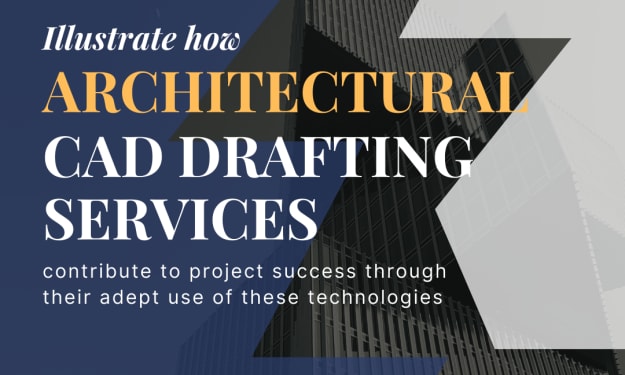Unlocking the Potential of Interior Design with 3D Architectural Rendering Services
Looking to unlock the full potential of your interior design projects? Learn how 3D architectural rendering services can help bring your vision to life with stunningly realistic visuals and improved design accuracy. Discover the benefits and considerations of incorporating 3D rendering into your design process today.

Before we dive into the specifics of 3D architectural rendering, let's first define what they are. In simple terms, architectural rendering services are a type of visual communication that uses computer-generated images to depict interior and exterior spaces. These images can be incredibly realistic and detailed, giving clients a clear idea of what their space will look like before any work is done.
There are many different types of architectural rendering, but 3D architectural rendering services is by far the most popular and effective for interior design. With 3D rendering, designers can create a fully-realized 3D model of a space, complete with lighting, textures, and other details. This model can then be used to create images and videos that accurately depict the space from any angle.
Benefits of using 3D Architectural Rendering for Interior Design
There are many benefits to using 3D architectural rendering for interior design projects. First and foremost, it allows designers to create incredibly realistic and detailed visualizations of their designs. This can help clients to better understand the design concept and visualize the end result. It can also help designers to identify potential problems or issues with the design before any work is done.
Another major benefit of 3D rendering is that it allows for much greater flexibility in the design process. With a 3D model, designers can easily make changes and adjustments to the design without having to start from scratch. This can save a significant amount of time and money, as well as reduce the risk of errors or mistakes.
Finally, 3D rendering can help to streamline the communication process between designers and clients. With realistic images and videos, clients can more easily provide feedback and make decisions about the design. This can help to ensure that everyone is on the same page and that the final result meets the client's expectations.
Understanding the Process of 3D Architectural Rendering
The process of 3D architectural rendering typically involves several steps. First, the designer will create a 3D model of the space using specialized software. This model will include details such as lighting, textures, and other elements.
Once the model is complete, the designer will use the software to create images and videos of the space from different angles. These images and videos can then be used to create a presentation for the client, which can include a virtual tour of the space. The client can then provide feedback and make any necessary changes to the design.
Once the design is finalized, the designer can use the 3D model to create detailed blueprints and plans for the construction process. This can help to ensure that the final product is exactly what the client envisioned.
Types of Interior Design Renderings
There are several different types of interior design renderings, each with its own unique benefits and uses. Some of the most common types include:
Still Renderings
Still renderings are static images of a space that can be used to show the design from different angles. These images can be incredibly detailed and realistic, making them ideal for presentations and marketing materials.
Walkthroughs
Walkthroughs are animated videos that allow viewers to virtually walk through a space. This can allow clients to experience the design in a more immersive way and get a better sense of the space.
Virtual Reality
Virtual reality is a new and exciting technology that allows clients to experience a space in a fully immersive way. With VR, clients can explore the space in a way that feels like they are actually there.
Why Choose 3D Rendering for Interior Design
There are several reasons why 3D rendering is the best choice for interior design. First, it allows designers to create incredibly detailed and realistic visualizations of their designs. This can help clients to better understand the design concept and make informed decisions about the project.
Second, 3D rendering is incredibly flexible and allows for easy changes and adjustments to the design. This can save time and money, as well as reduce the risk of errors or mistakes.
Finally, 3D rendering can help to improve communication between designers and clients. With realistic images and videos, clients can more easily provide feedback and make decisions about the design. This can help to ensure that everyone is on the same page and that the final result meets the client's expectations.
How 3D Rendering Improves Communication with Clients
One of the most significant benefits of 3D rendering is that it can help to improve communication between designers and clients. With realistic images and videos, clients can more easily understand the design concept and provide feedback. This can help to ensure that everyone is on the same page and that the final result meets the client's expectations.
Additionally, 3D rendering can help to reduce misunderstandings and mistakes during the design process. By creating a detailed and accurate visualization of the space, designers can more easily identify potential problems or issues with the design. This can help to ensure that the final product is exactly what the client envisioned.
The Importance of Architectural 3D Rendering in Real Estate Marketing
Architectural 3D rendering is an incredibly important tool in real estate marketing. With realistic images and videos, potential buyers can more easily visualize themselves in the space and get a better sense of the property. This can help to increase interest in the property and lead to more sales.
Additionally, 3D rendering can help to showcase the unique features of a property and highlight its potential. By creating a detailed and accurate visualization of the space, designers can showcase the property in the best possible light and help potential buyers to see its value.
Top Tools for 3D Rendering Interior Design
There are many different tools and software programs available for 3D rendering interior design. Some of the most popular and effective options include:
SketchUp
SketchUp is a powerful and user-friendly 3D modeling tool that is ideal for interior design projects. It allows designers to create detailed 3D models of spaces and easily make changes and adjustments to the design.
3ds Max
3ds Max is a professional-grade 3D modeling and rendering tool that is used by many interior designers and architects. It offers a wide range of features and capabilities, including advanced lighting and texture tools.
Revit
Revit is a powerful software program that is designed specifically for architectural design and construction. It allows designers to create detailed 3D models of buildings and spaces, as well as generate detailed construction plans and blueprints.
How to Choose the Right 3D Architect Home Designer
When choosing a 3D architect home designer, there are several key factors to consider. First, you should look for a designer with experience in 3D rendering and a strong portfolio of past projects. Additionally, you should look for a designer who is responsive and communicative, and who is willing to work closely with you throughout the design process.
You should also consider the designer's pricing and availability, as well as their level of expertise in your specific type of project. Finally, you should take the time to read reviews and recommendations from past clients to get a sense of the designer's reputation and quality of work.
Architectural 3D Design Trends to Watch Out For
As with any design field, there are always new and exciting trends emerging in the world of architectural 3D design. Some of the latest trends to watch out for include:
Sustainable Design
Sustainable design has become increasingly important in recent years, and this trend is likely to continue in the world of architectural 3D design. Designers are incorporating more sustainable materials and practices into their designs, and using 3D rendering to showcase these features.
Biophilic Design
Biophilic design is a trend that focuses on incorporating natural elements into indoor spaces. This can include features such as living walls, natural lighting, and natural materials. 3D rendering can be used to showcase these features and help clients to better understand their benefits.
Minimalist Design
Minimalist design has been a popular trend in interior design for many years, and it is now making its way into architectural 3D design as well. This trend focuses on simplicity and functionality, and often incorporates clean lines and neutral colors.
Frequently Asked Questions About 3D Architectural Rendering Services
What is the difference between 2D and 3D rendering?
2D rendering is a flat, static image of a space, while 3D rendering is a fully-realized 3D model that can be viewed from any angle.
How long does it take to complete a 3D rendering project?
The timeline for a 3D rendering project will depend on the size and complexity of the project, as well as the designer's availability. However, most projects can be completed within a few weeks to a few months.
What is the cost of 3D rendering services?
The cost of 3D Architectural rendering services will vary depending on the size and complexity of the project, as well as the designer's pricing structure. However, most designers will provide a detailed quote before beginning any work.
Conclusion
In conclusion, 3D architectural rendering services have the potential to completely transform the world of interior design. By providing incredibly realistic and detailed visualizations of spaces, these services can help designers to create better designs, improve communication with clients, and streamline the construction process. Whether you are an interior designer or a potential client, taking advantage of 3D rendering services is a smart choice that can lead to better outcomes and a more enjoyable design experience.
Click Here To Know What is CAD Drawings and its benefits
About the Creator
Drafting Consultants
Drafting Consultants have over 10 years of experience in drafting and designing, including architectural CAD drawings, computer-aided design (CAD) drawings, truss designs, steel detailing, 3d modeling and 3d rendering animations.






Comments
There are no comments for this story
Be the first to respond and start the conversation.